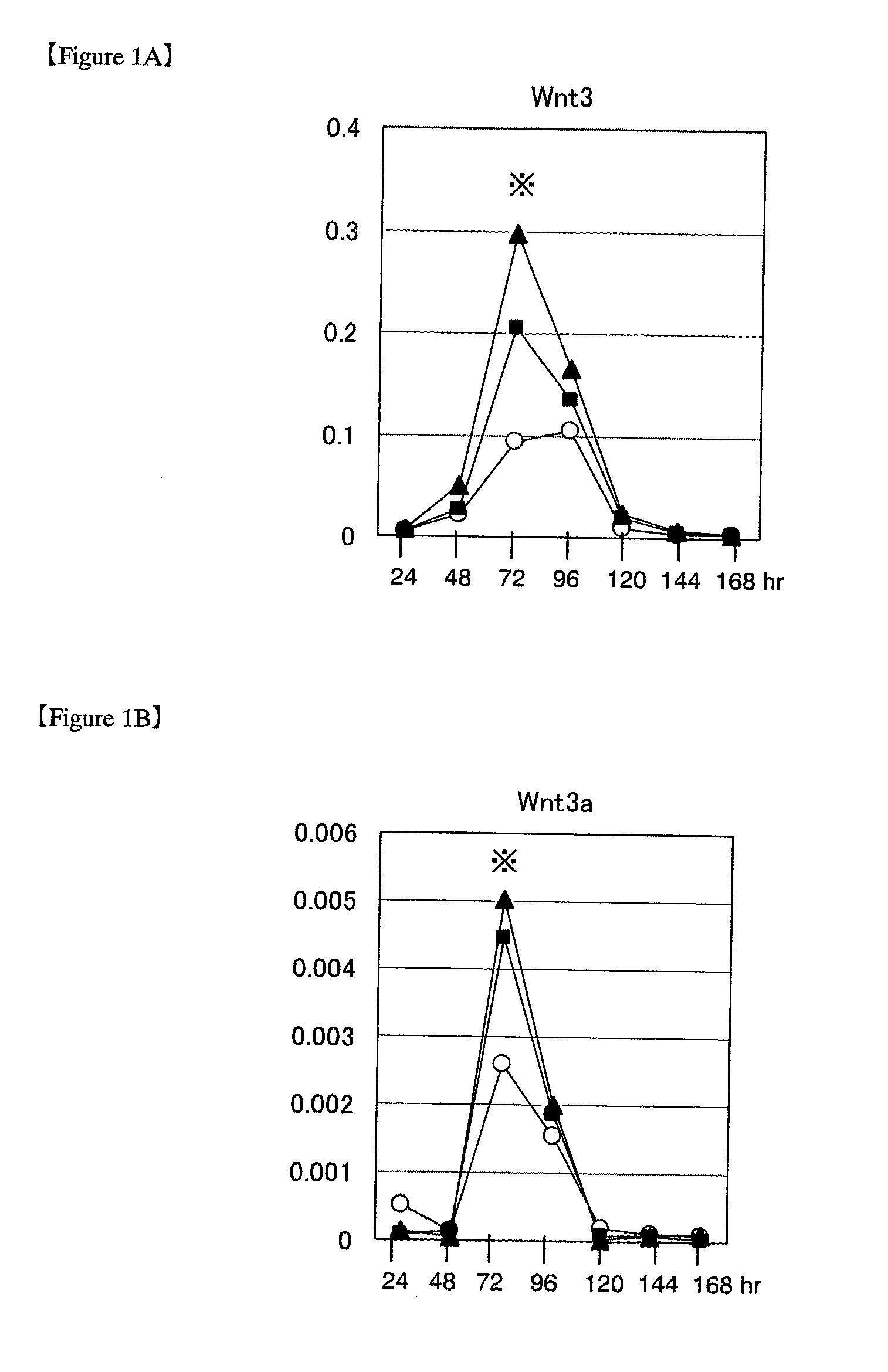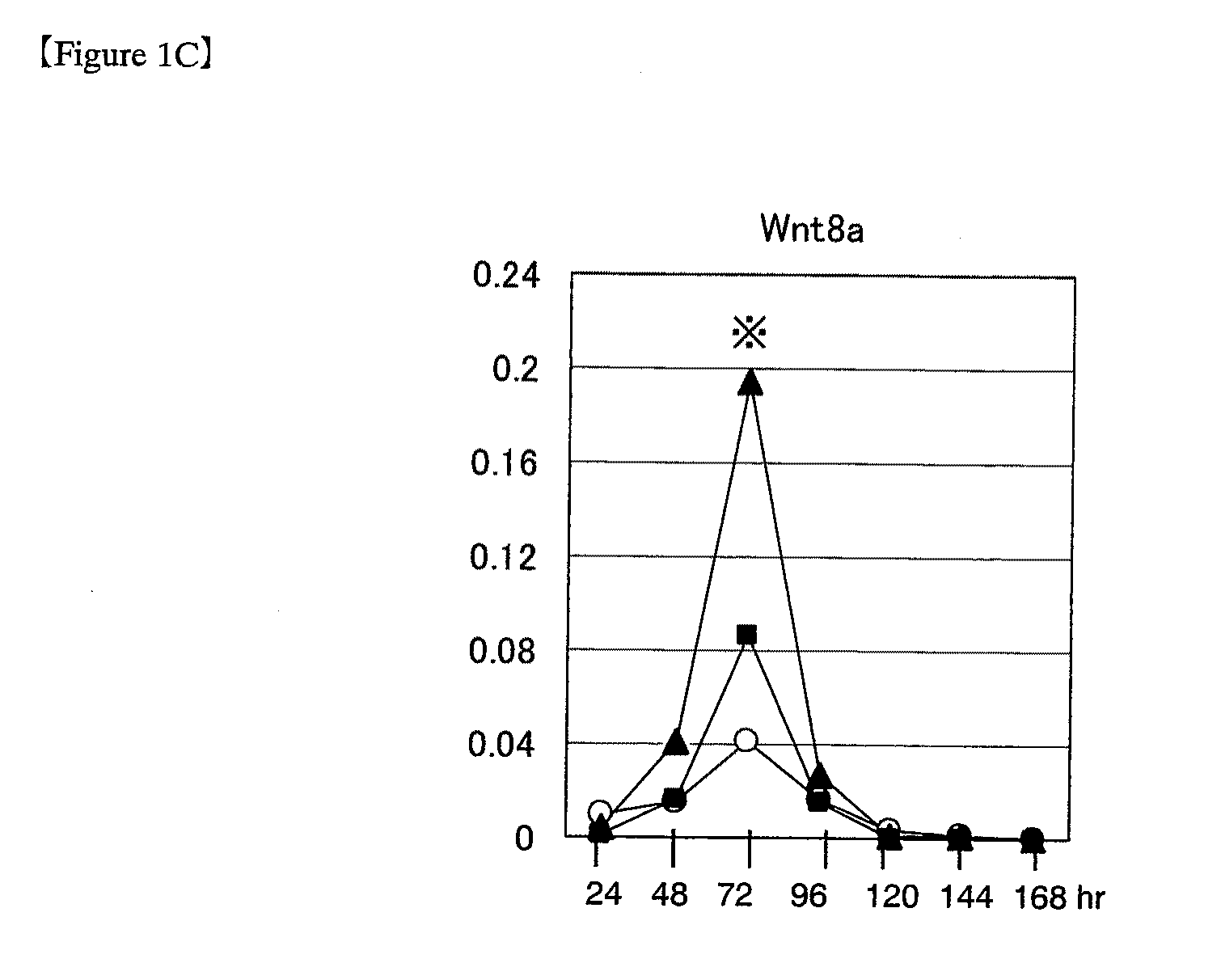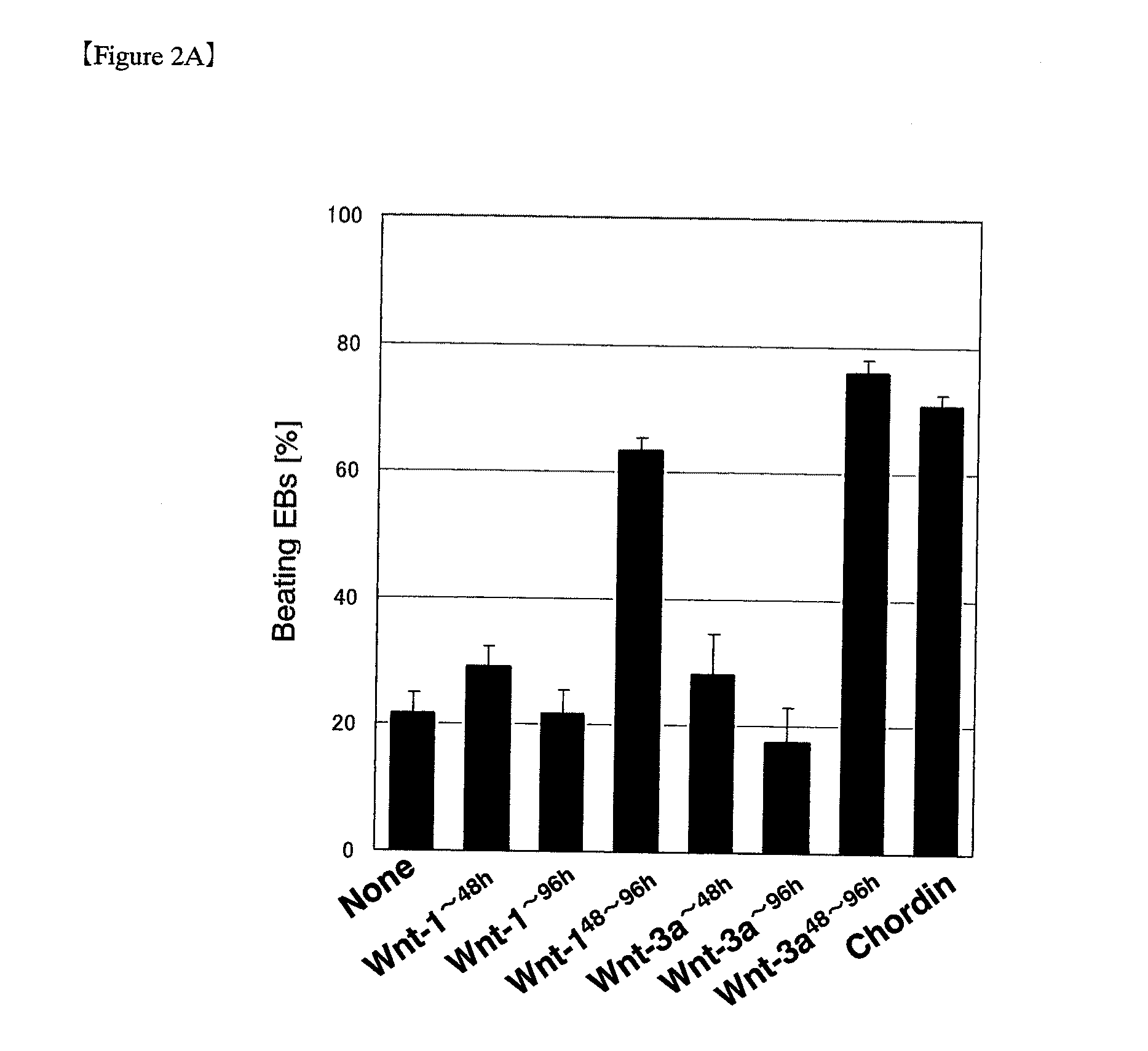Method for inducing differentiation of pluripotent stem cells into cardiomyocytes
a technology cardiomyocytes, which is applied in the field of inducing differentiation of pluripotent stem cells into cardiomyocytes, can solve the problems of cardiac failure, cardiac failure, and further exhaustion and death of cardiomyocytes, and achieve the effect of efficient and selective production
- Summary
- Abstract
- Description
- Claims
- Application Information
AI Technical Summary
Benefits of technology
Problems solved by technology
Method used
Image
Examples
example 1
Study on Expression Patterns of Various
[0141]Wnt genes during induction of differentiation in ES cells (1) Various Wnt genes were studied for their expression during differentiation in mouse ES cells. For use in experiments, mouse ES cells were passaged and maintained in an undifferentiated state according to the methods as described in “Manipulating the Mouse Embryo: A Laboratory Manual” (Hogan et al., eds., Cold Spring Harbor Laboratory Press, 1994) and “Embryonic Stem Cells: Methods and Protocols” (Turksen ed., Humana Press, 2002) by using Knockout-DMEM (Invitrogen) medium containing 20% fetal bovine serum, 2 mmol / L L-glutamine and 0.1 mmol / L 2-mercaptoethanol (hereinafter referred to as ESM), supplemented with 1000 U / mL LIF (ESGRO; Chemicon). ES cells passaged under these conditions are hereinafter referred to as “ES cells passaged under ordinary culture conditions.” The mouse ES cells used in the following experiments were D3 cells, R1 cells and 129SV cells (purchased from Dain...
example 2
Enhancing Effect of Recombinant Wnt Protein Treatment on the Appearance of Cardiomyocytes Derived from ES Cells (1)
[0149]In the early stage of differentiation in ES cells, transient elevations in expression of various Wnt genes were observed prior to the appearance of cardiomyocytes. Then, ES cells at this stage were treated with recombinant Wnt proteins to study the myocardial differentiation-inducing effect of the proteins. Induction of ES cell differentiation was accomplished in the same manner as used in Example 1, except that some of the experimental groups were cultured in medium containing a commercially available recombinant WNT-1 (Peprotech), Wnt-3a (R&D systems) or Wnt-5a (R&D systems) protein. Treatment of ES cells in medium supplemented with a recombinant protein of canonical Wnt such as WNT-1 is hereinafter referred to as “Wnt treatment.”
[0150]The appearance rate of EBs exhibiting spontaneous beating was investigated periodically as one of a useful index of the differen...
example 3
Properties of Cardiomyocytes Derived from Wnt-Treated ES Cells
[0155]As shown in Example 2, beating of EBs prepared from ES cells was increased significantly by Wnt treatment, and to confirm that the beating cells in these EBs were cardiomyocytes, further studies were performed to investigate gene expression and protein production of various myocardial-specific marker molecules. In the same manner as used in Example 2, ES cells were induced to differentiate and the resulting EBs were collected at 10 days after induction of differentiation to prepare cDNA. Real-time PCR quantification was performed by the TaqMan probe method, i.e., by using the above cDNA (1 μL) as a template and using a TaqMan Universal PCR Master Mix (PE Applied Biosystems) according to the instructions attached thereto. TaqMan probes for detection of various genes were designed using primer design software (ABI PRISM Primer Express) on the basis of the nucleotide sequence information of the genes. The nucleotide se...
PUM
 Login to View More
Login to View More Abstract
Description
Claims
Application Information
 Login to View More
Login to View More - R&D
- Intellectual Property
- Life Sciences
- Materials
- Tech Scout
- Unparalleled Data Quality
- Higher Quality Content
- 60% Fewer Hallucinations
Browse by: Latest US Patents, China's latest patents, Technical Efficacy Thesaurus, Application Domain, Technology Topic, Popular Technical Reports.
© 2025 PatSnap. All rights reserved.Legal|Privacy policy|Modern Slavery Act Transparency Statement|Sitemap|About US| Contact US: help@patsnap.com



